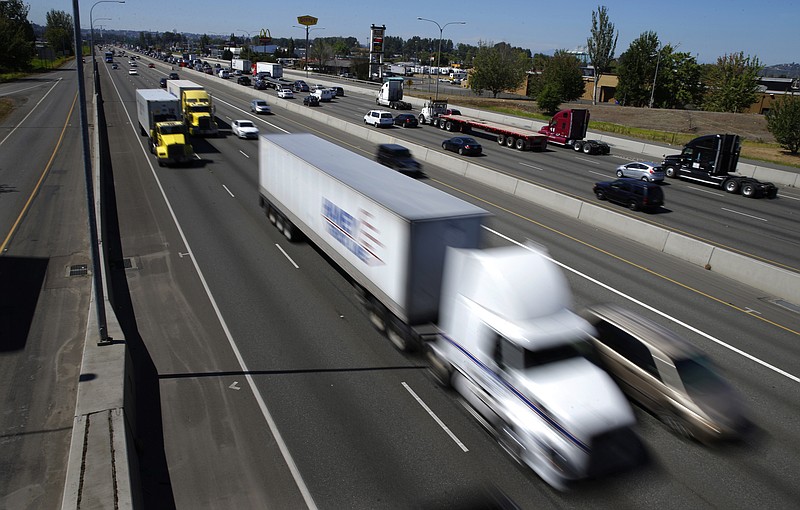It would be too simplistic to say Democrats never consider management in regulating industry and that Republicans in regulating industry consider management too often.
But the trucking industry, in which Chattanooga is a major player, seems caught between those regulating partisans.
We would like to believe, though, that sensible regulations might be kept in place in the industry while giving management as much flexibility as possible to maximize both productivity and driver and public safety.
During the Obama administration, truckers were limited to driving for 11 hours per day within a 14-hour period, followed by a mandated 10 hours of rest.
A government bureaucrat might have considered correctly that a period of 11 hours is a long time to be on the road, but the government bureaucrat doesn't live in the real world of trucking. The bureaucrat or contingent of bureaucrats, in setting an hours limit, didn't consider delays for truckers at shippers or receivers, inclement weather, a lack of movement due to congestion or construction, or gridlock from a crash on the road.
Yet, if the truck is flagged for exceeding the 11 hours, the driver may be placed "out of service" for a day or longer. When that happens, the company's goods are not getting where they're supposed to go, and the driver, who is often paid by the mail, is getting zilch.
"Federal regulators simply don't have a clue," Todd Spencer, executive vice president of the Owner Operator Independent Drivers Association, a trade group, told an NPR affiliate in 2017. "They don't have a clue what truckers do, how they go about doing it, the environment that they live in, the schedules and things like that, the demands of the job."
Since Donald Trump became president, at least a dozen transportation safety rules under development or already in place were repealed, withdrawn, delayed or put on the back burner.
Now, the Department of Transportation is considering relaxing the 11-hour rule, a proposal that delights the trucking industry and enrages safety groups.
But what is really needed, a senior vice president of safety and risk management at Chattanooga-based Covenant Transport said, is not necessarily longer hours but more flexibility in how hours are calculated.
"The current program has unintended consequences which encourage the driver to drive fatigued in certain situations," Rick Reinoehl added.
What has helped the industry correctly pinpoint driving time and off time are electronic logging devices (ELDs), which cannot be altered like paper logs can and which a congressional directive set in motion through the Obama administration in 2017.
Wired to the truck's engine, they have a display available to the truck's driver. Many other trucks are outfitted with gadgets that warn drivers when they are getting near their hourly limit or even shut down the engine once the hours limit is reached and after numerous warnings are given.
Nevertheless, they are of little help - and the driver is helpless - if the truck is hemmed in an interstate backup due to construction or a crash. Stopping to rest at that point in the middle of a busy highway or having the truck shut down are unthinkable. Flexibility in some of those situations seems reasonable and, frankly, safer.
Another regulation the Trump administration is eyeing, and which seems eminently fixable through flexibility, is the mandatory 30-minute rest period drivers must take when approaching the eight-hour mark.
Spencer's organization would replace that rule by allowing truckers, within their given 14-hour period, to stop the clock for up to three consecutive hours. That off-the-clock period would be able to include actual rest or the time it takes to wait out the likes of a long traffic clog.
"This is not rocket science stuff," the drivers association trade group spokesman said. "Rest when it makes sense to rest. Drive when it makes sense to drive."
What especially makes sense is to have both safety organization and industry organization advocates at the table in discussing regulatory changes and in understanding that neither will fully get its way.
Even with the Obama-era time regulation, fatal crashes involving large trucks increased 10% in 2017, the last year for which statistics are available.
However, rather than assume a time regulation is unneeded, or even has contributed to an increase in crashes, it makes more sense to add flexibility to the rules that should in turn allow trucking companies and drivers to be more efficient and more safe.
